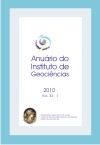Mercury bioaccumulation in distinct tropical fish species from estuarine ecosystems in Rio de Janeiro State, Brazil
DOI:
https://doi.org/10.11137/2010_1_54-62Abstract
Mercury bioaccumulation was investigated in four tropical fish species (Genidens genidens, Aspistor luniscutis, Haemulon steindachneri and Micropogonias furnieri) from Ribeira Bay and Guanabara Bay (Rio de Janeiro State, Brazil). The sampling of 198 and 83 specimens was performed in the Ribera and Guanabara Bays, respectively. Total mercury content in fish muscles was determined by atomic absorption coupled to the thermodesorption technique. Biometry (weight and length) of the sampled specimens was performed in order to prepare bioaccumulation curves. Average concentrations of mercury in G. genidens revealed that this species presented higher levels at the Guanabara Bay and lower at the Ribeira Bay. In the Ribeira Bay, the highest average mercury concentration was quantified in H. steindachneri, which presented average content closer to the limit established by World Health Organization (500 ng/g) for human consumption. Besides that, at the Ribeira Bay mercury accumulation speed by G. genidens and M. furnieri was more accelerated than the other species collected in this bay. Although mercury input into Ribeira Bay is not so expressive, mercury seems to be more bioavailable than at the Guanabara Bay, where bottom sediments play an important role in the metals storage. If hydrogeochemical conditions of the Guananabara Bay are modified, mercury in the sediments may become easily bioavailable. Similarly, high inputs of mercury into Ribeira Bay would be easily assimilated by biota. The bioaccumulation curves obtained in this work will help in the prediction of mercury concentration in fish muscles, just using biometric data.Downloads
Download data is not yet available.
Downloads
Published
2010-06-01
How to Cite
Rodrigues, A. P. de C. (2010) “Mercury bioaccumulation in distinct tropical fish species from estuarine ecosystems in Rio de Janeiro State, Brazil”, Anuário do Instituto de Geociências. Rio de Janeiro, BR, 33(1), pp. 54–62. doi: 10.11137/2010_1_54-62.
Issue
Section
não definida
License
This journal is licensed under a Creative Commons — Attribution 4.0 International — CC BY 4.0, which permits use, distribution and reproduction in any medium, provided the original work is properly cited.















